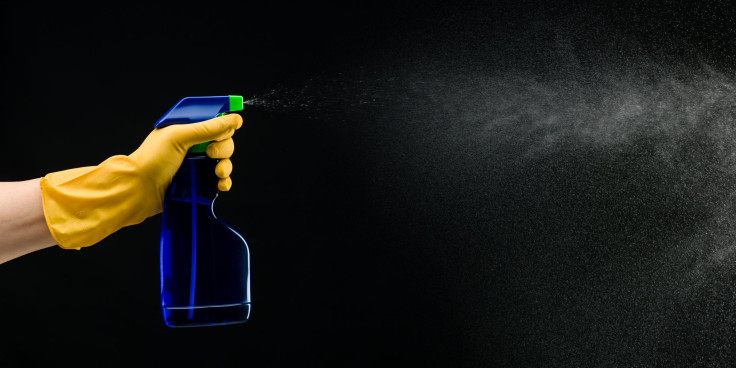All-Natural And Organic Cleaning Products Found To Contain Toxins: 7 DIY Substitutes

House cleaning may be hazardous thanks to new findings that will have you pausing to pull the trigger on your go-to cleaning product. An Australian researcher from the University of Melbourne studied the ingredients in common consumer products labeled “all-natural,” “non-toxic,” “green,” and “organic,” and found a range of potentially harmful compounds. The study, published in the journal Air Quality, Atmosphere & Health, compared the dangers of 37 different air fresheners, cleaning products, laundry supplies, and personal care products.
Of the 156 different volatile organic compounds (VOCs,) researchers found from the products they studied, 42 were classified as toxic or hazardous under U.S. federal laws. The products contained an average of 15 VOCs, and each one contained at least one of the harmful chemicals. When they took a look at “green” fragranced products, they found more than 550 VOCs, but fewer than three percent of those ingredients were listed on the product label or material safety data sheet (MSDS).
Not only are products mixing in potentially harmful ingredients, but certain chemicals like terpenes react with the ozone layer. Instead of spraying, scrubbing, and washing yourself, your family, and possibly the environment into unsafe conditions, consider these seven natural alternatives, courtesy of Wellness Mama, to clean your home:
1. Oven
Spray entire internal surface of the oven with a water bottle. Pour a ¼ inch thick layer of a baking soda paste on the bottom. Close the oven for 2 to 3 hours, and then simply wipe up the paste and surrounding surfaces with a damp cloth.
2. Windows
Fill a jar with organic citrus peels, such as a lemon, lime, or orange. Pour undiluted white vinegar over them, and let mixture sit for 3 to 12 days (depending on preference of potency). Strain out the vinegar, dilute with water, and use for cleaning windows and even mopping floors.
3. Bathrooms
Mix 1 cup of baking soda with ½ cup of borax powder and ½ cup of salt. Lightly wet the desired surface, such as a tile or tub, sprinkle powdery blend onto the area and let it sit for five minutes. Then scrub with a sturdy brush, and for tougher scum rinse over with white vinegar afterward.
4. Dishwasher
Get rid of musty odors and dirt by filling a dishwasher safe bowl, such as a glass Pyrex container, with 2 cups of vinegar. Set it facing up on the top rack of an empty dishwasher, run a hot cycle, and remove the bowl.
5. Garbage disposal
Slice a lemon in half and shove it into the garbage disposal. Turn on with running water for 10 seconds then turn off and pour ½ cup of baking soda and 1 cup of distilled white vinegar into the disposal. Let sit for 10 minutes before running the water and disposal for another 10 seconds.
6. Air freshener
Pour 1 quart of water into a medium saucepan and toss in 1 sliced lemon, 2 tablespoons of rosemary, and a dash a vanilla extract. Let simmer on medium for 20 minutes as the scent dissipates throughout the air. Just make sure not to let the water completely evaporate. Other creative combinations can be made using the same steps.
7. Liquid laundry soap
Grate one bar of soap (ivory or unscented) with a cheese grater or food processor. Not only is this a safer route, but also a less expensive one. In a large pan, blend grated soap with 2 quarts of water on gradual heat, and stir constantly until soap is completely dissolved. Put 4.5 gallons of hot tap water into a 5-gallon bucket and stir in 1 cup of borax together with 1 cup of Arm and Hammer washing soda. Pour soap mixture from pan into the bucket, stir well, and leave overnight. Use ½ to 1 cup per load.
Source: Steinemann A. Volatile emissions from common consumer products. Air Quality, Atmosphere & Health. 2015.



























